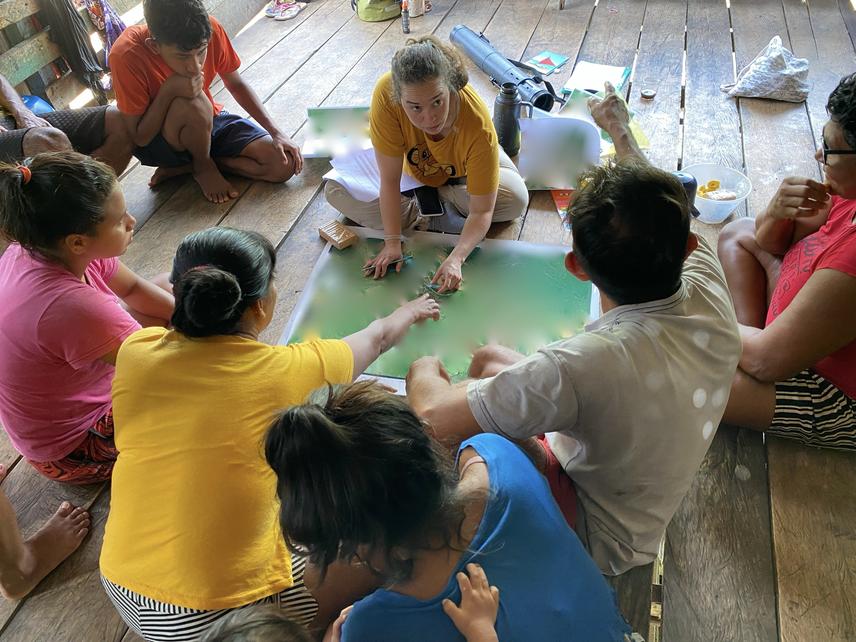Priscila dos Reis Cunha
The Amazon Basin hosts approximately 15% of the world's freshwater fish diversity and sustains abundant fisheries that provide livelihoods for around 30 million people. Among these fish, arapaima (Arapaima spp.) stands out due to its large size and economic value, making it central to local fisheries. However, arapaima are increasingly threatened by poaching, with up to 77% of their harvest occurring illegally. Poaching not only undermines conservation efforts but also jeopardises the sustainability of fisheries and the livelihoods they support.

Participatory mapping session in April 2025. © Raimunda Antonia de Freita dos Reis.
Despite growing attention to the drivers of poaching, most existing studies emphasise social factors, with only 7% incorporating ecological ones. This overlooks the critical ecological dynamics that shape both fish populations and fisher behaviour. This project aims to address this gap by adopting a social-ecological approach to investigate the drivers of arapaima poaching in the complex river-floodplain systems of the Amazon.
The main objectives of the project are to:
- Compile and integrate data on key social and ecological factors influencing poaching.
- Use spatial participatory mapping to estimate lake-level poaching frequency and capture local knowledge on factors affecting poaching.
- Combine scientific and local knowledge to identify and assess the causal drivers of poaching.
The research will be conducted across 19 management units engaged in arapaima co-management. Five potential drivers will be analysed: lake connectivity, arapaima abundance, vegetation cover, proximity to other communities, and co-management design. Participatory mapping sessions with local leaders and fishers will be used to identify poaching hotspots, assess poaching frequency, and gather local insights. Data will be analysed using a structural causal modelling framework to evaluate the relationships between proposed factors and poaching frequency. The findings will be used to identify significant predictors and generate spatial heat maps of poaching risk.
The data generated will be compiled into actionable strategies through a collaborative workshop, bringing together stakeholders to develop evidence-based recommendations for preventing poaching and ensuring sustainable arapaima management.